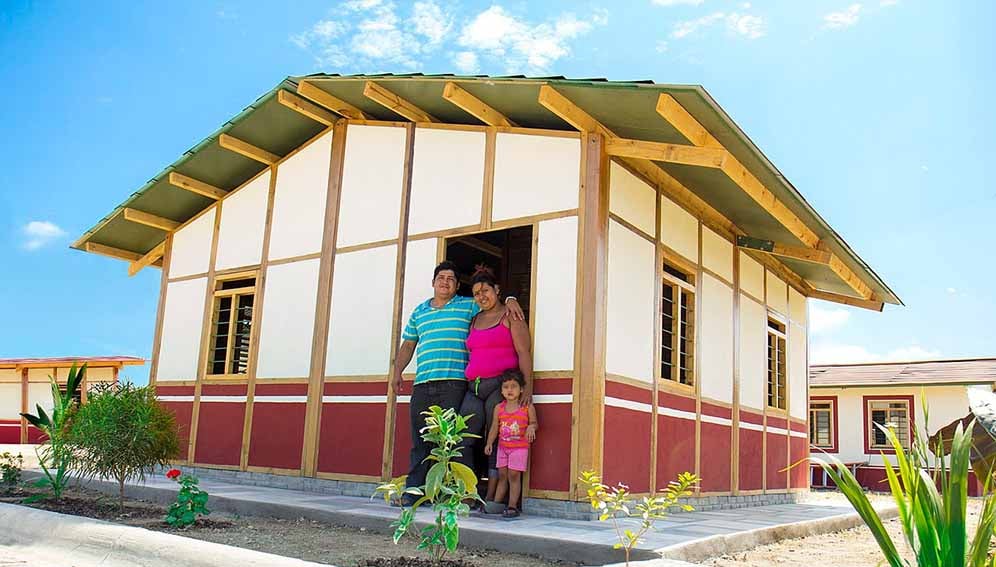07/10/25
Climate-smart housing design helps cities beat the heat

Send to a friend
The details you provide on this page will not be used to send unsolicited email, and will not be sold to a 3rd party. See privacy policy.
[GOIÂNIA, SciDev.Net] Painting walls in light colours, insulating roofs, choosing medium-sized windows, and aligning buildings to the sun’s path may seem like simple choices. But they could provide powerful defences against climate change for millions of people in the world’s most vulnerable regions.
That’s the message of a study, set to appear in the November issue of the journal Energy and Buildings, which identifies low-cost, climate-smart design strategies as crucial for future housing in Latin America’s rapidly warming cities.
Researchers used computer simulations to test how various climate-resilient building projects would perform under current and projected climate conditions in five major cities — Rio de Janeiro and São Paulo, in Brazil, Santiago (Chile), Bogotá (Colombia), and Lima (Peru).
They analysed energy performance, costs, and carbon emissions to determine which combinations of materials and designs could best maintain comfortable conditions indoors while minimising energy use.
Lead author Alexandre Santana Cruz, who has a PhD in architecture from the Federal University of Rio de Janeiro, told SciDev.Net: “The results indicate that widely used construction systems, such as traditional masonry, fibre cement or clay tiles, combined with expanded polystyrene and single-pane glass, represent the ideal configurations for climate-resilient buildings in the countries analysed.”
This is what experts call passive architectural design, which takes advantage of natural ventilation, shading and sunlight to keep homes comfortable without heavy reliance on air conditioning.
Because they are affordable and sustainable, these strategies are considered well-suited for low- and middle-income countries.
According to the study, more than a billion people worldwide live in inadequate housing, most of them in regions such as Latin America, Africa, and the Asia Pacific, where populations are growing rapidly and cities are expanding.
While advanced building technologies can offer additional climate benefits, Santana Cruz warns that high costs and the carbon emissions resulting from their production make them unrealistic for widespread adoption in the region.
Architect Karen Carrer Ruman de Bortoli, a professor at the Federal Institute of São Paulo, who did not participate in the study, agrees. She says that low-cost, low-tech passive strategies can lessen discomfort in warm climates and reduce the need for air conditioning.
These strategies include proper orientation for sunlight and wind, walls that are more resistant to heat transfer, ventilated roofs, and integration of green spaces.
“In Latin American countries, where social housing programmes face similar challenges, these types of measures — adapted to local climate conditions — have the potential to reduce operating costs, mitigate health impacts, and avoid hasty renovations that end up further compromising housing resilience,” Bortoli told SciDev.Net.
High costs
However, despite their promise, these solutions are often overlooked in large-scale housing schemes.
“Quality architectural projects are often still perceived as subjective or associated with high costs, which hinders their adoption in vulnerable communities,” said Santana Cruz.
“Governments and public institutions often respond to housing shortages with standardised social housing prototypes, which ignore the specific climatic and urban characteristics of a location.”
This oversight is reflected in the findings of the MORA housing research group at the Federal University of Uberlândia, of which Bortoli is a member. Their studies found that homes built under a federal housing programme in a city with a dry, mixed climate often lacked proper passive design features, leaving families vulnerable, especially during heatwaves.
“This problem is further exacerbated by subsequent, often informal and costly renovations undertaken by residents themselves in an attempt to correct the limitations of the original design,” Bertoli added.
Tools and training
To bridge the gap, researchers propose developing a free digital tool that can generate customised housing designs based on local climate and urban conditions.
They also highlight the importance of community engagement and education. Providing new homeowners with simple, practical advice on how they can adapt their own homes could make a major difference in comfort and energy use, according to Bortoli.
“Simple guidelines, such as the importance of shading, cross-ventilation, roof maintenance, and even colour selection, can significantly improve the thermal comfort and overall resilience of homes without the need for major investments,” she explained.
Bortoli’s research group is already producing renovation guides and other online information for architects, service providers, and residents.
The architect also points to the need to train construction and renovation workers and share best practices for home adaptation through community workshops.
This article was produced by SciDev.Net ‘s Latin America and Caribbean edition.


